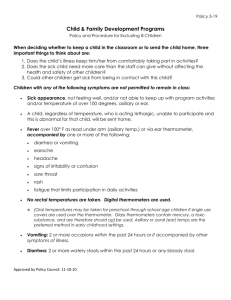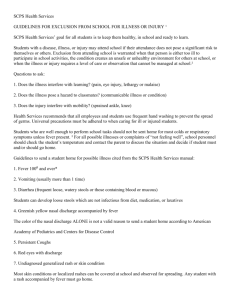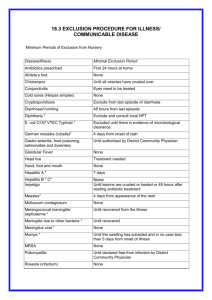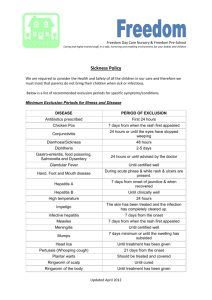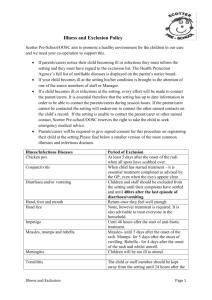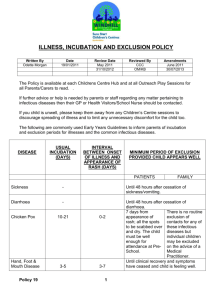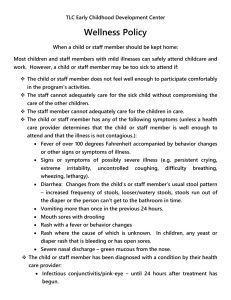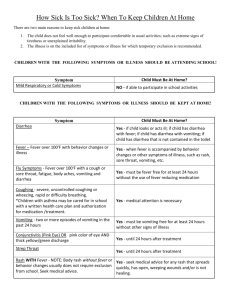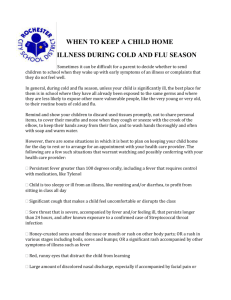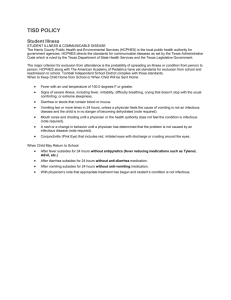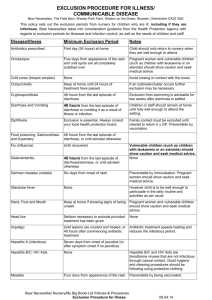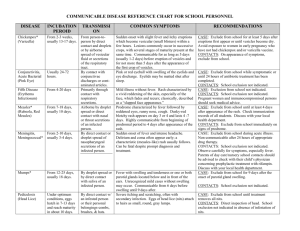Recommendations for Inclusion or Exclusion from School
advertisement
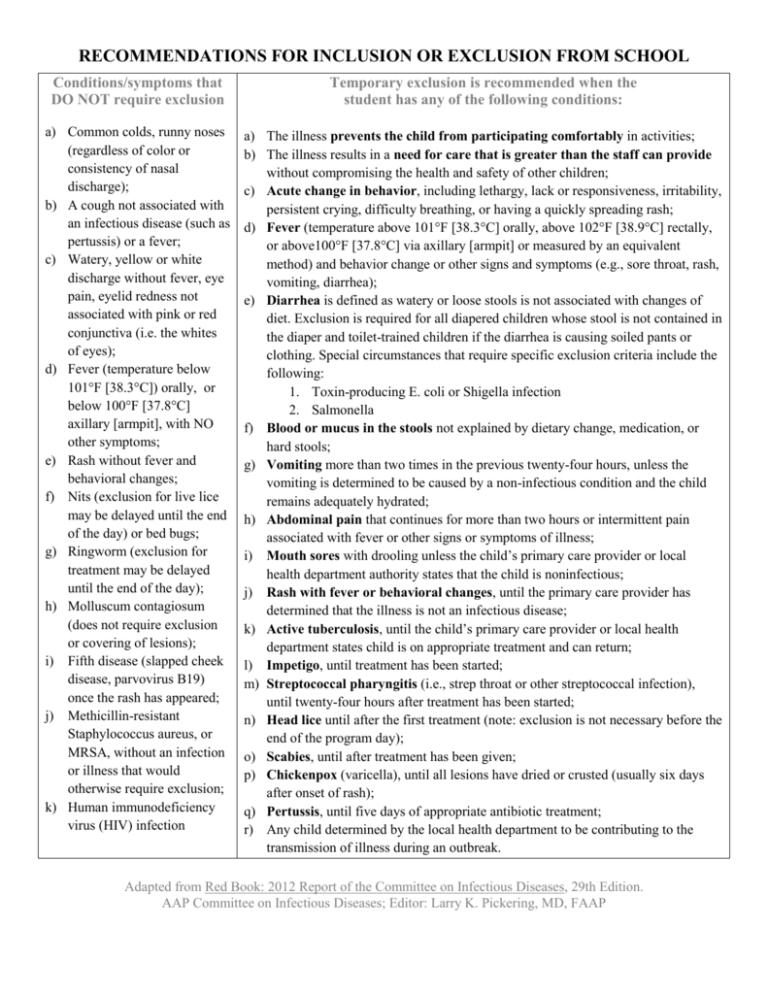
RECOMMENDATIONS FOR INCLUSION OR EXCLUSION FROM SCHOOL Conditions/symptoms that DO NOT require exclusion Temporary exclusion is recommended when the student has any of the following conditions: a) Common colds, runny noses (regardless of color or consistency of nasal discharge); b) A cough not associated with an infectious disease (such as pertussis) or a fever; c) Watery, yellow or white discharge without fever, eye pain, eyelid redness not associated with pink or red conjunctiva (i.e. the whites of eyes); d) Fever (temperature below 101°F [38.3°C]) orally, or below 100°F [37.8°C] axillary [armpit], with NO other symptoms; e) Rash without fever and behavioral changes; f) Nits (exclusion for live lice may be delayed until the end of the day) or bed bugs; g) Ringworm (exclusion for treatment may be delayed until the end of the day); h) Molluscum contagiosum (does not require exclusion or covering of lesions); i) Fifth disease (slapped cheek disease, parvovirus B19) once the rash has appeared; j) Methicillin-resistant Staphylococcus aureus, or MRSA, without an infection or illness that would otherwise require exclusion; k) Human immunodeficiency virus (HIV) infection a) The illness prevents the child from participating comfortably in activities; b) The illness results in a need for care that is greater than the staff can provide without compromising the health and safety of other children; c) Acute change in behavior, including lethargy, lack or responsiveness, irritability, persistent crying, difficulty breathing, or having a quickly spreading rash; d) Fever (temperature above 101°F [38.3°C] orally, above 102°F [38.9°C] rectally, or above100°F [37.8°C] via axillary [armpit] or measured by an equivalent method) and behavior change or other signs and symptoms (e.g., sore throat, rash, vomiting, diarrhea); e) Diarrhea is defined as watery or loose stools is not associated with changes of diet. Exclusion is required for all diapered children whose stool is not contained in the diaper and toilet-trained children if the diarrhea is causing soiled pants or clothing. Special circumstances that require specific exclusion criteria include the following: 1. Toxin-producing E. coli or Shigella infection 2. Salmonella f) Blood or mucus in the stools not explained by dietary change, medication, or hard stools; g) Vomiting more than two times in the previous twenty-four hours, unless the vomiting is determined to be caused by a non-infectious condition and the child remains adequately hydrated; h) Abdominal pain that continues for more than two hours or intermittent pain associated with fever or other signs or symptoms of illness; i) Mouth sores with drooling unless the child’s primary care provider or local health department authority states that the child is noninfectious; j) Rash with fever or behavioral changes, until the primary care provider has determined that the illness is not an infectious disease; k) Active tuberculosis, until the child’s primary care provider or local health department states child is on appropriate treatment and can return; l) Impetigo, until treatment has been started; m) Streptococcal pharyngitis (i.e., strep throat or other streptococcal infection), until twenty-four hours after treatment has been started; n) Head lice until after the first treatment (note: exclusion is not necessary before the end of the program day); o) Scabies, until after treatment has been given; p) Chickenpox (varicella), until all lesions have dried or crusted (usually six days after onset of rash); q) Pertussis, until five days of appropriate antibiotic treatment; r) Any child determined by the local health department to be contributing to the transmission of illness during an outbreak. Adapted from Red Book: 2012 Report of the Committee on Infectious Diseases, 29th Edition. AAP Committee on Infectious Diseases; Editor: Larry K. Pickering, MD, FAAP
